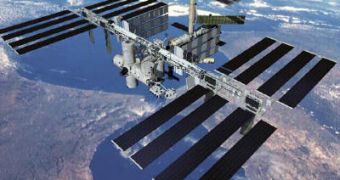The permanent crew on board the International Space Station is now formed of only three astronauts, but it will soon be able to support a complement of six, meaning that it will require a new water reclamation system to recycle the water used on board. The newly built water recovery systems, which will be set to fit the space station, have left NASA's Marshall Space Flight Center yesterday and will arrive at the Kennedy Space Center where they will be subjected to final flight preparations.
The new Water Recovery System is scheduled to fly to the ISS during mission STS-126, on board the space shuttle Endeavor which is expected to launch late this year. The WRS will function in parallel with the Oxygen Generation System, flown into space by the Discovery shuttle in mid 2006, and both of them are part of NASA's Regenerative Environmental Control and Life Support System on the station.
"Recycling will be an essential part of daily life for future astronauts, whether on board the space station or living on the Moon. Delivering this hardware is an important step in achieving the station's full potential, allowing for additional crew members and more scientific research", said NASA's station program manager, Mike Suffredini.
Recycling will reduce the amount of consumables needed on board the space station by as much as 6,800 kilograms per year.
"As early as the late 1960's we knew sustaining life in space would require recycling water and oxygen. A number of us have experienced the entire lifecycle of this technology, all the way from early ideas to implementation. Knowing that we will soon see this system completed, gives us great pride", said Bob Bagdigian, ECLSS project manager.
The Water Recovery System basically recycles water by filtering it through a series of chemical processes and filters, thus making it safe to drink. Urine, for example, first passes through a distillation process to separate the liquid phase from the gaseous phase, after which it is mixed with other water waste and is treated with the help of a water processor.
After removing the remnant gaseous and solid phases, the liquid is filtered for additional purification and experiences a high-temperature catalytic reaction, in order to be cleaned of unwanted organic contaminants. It may seem a pretty repulsive process, but the recycled water may be cleaner than the one you drink every day.

 14 DAY TRIAL //
14 DAY TRIAL //